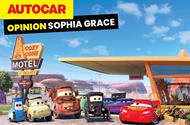Did Lightning McQueen Spark a New Generation’s Love for Cars?
Why Did Cars Resonate So Deeply With Kids (and Adults)?
If you were a kid (or a parent) in 2006, there’s a good chance you remember the first time you saw Lightning McQueen zoom across the big screen. For many, Cars wasn’t just another animated movie—it was a rite of passage. I still remember taking my younger brother to see it at the cinema. He was so hooked, we ended up going back three more times. And honestly? I was just as captivated as he was.
So, what made Cars so magnetic? At its core, it’s the story of Lightning McQueen, a rookie race car with a big ego and an even bigger dream: winning the Piston Cup. But after a twist of fate leaves him stranded in the forgotten town of Radiator Springs, McQueen’s journey shifts gears. He’s forced to slow down, connect with quirky locals, and learn that life isn’t just about crossing the finish line first.
The film’s magic lies in this blend of high-octane racing and heartfelt storytelling. It’s a coming-of-age tale disguised as a road trip, and it hits home for anyone who’s ever felt out of place or needed a second chance. The message? Sometimes, the detours in life lead to the best destinations.
How Did Cars Influence a New Generation of Car Enthusiasts?
Let’s be real: before Cars, most kids thought of vehicles as just a way to get from point A to B. But Pixar flipped the script. Suddenly, cars had personalities, dreams, and even a sense of humor. Lightning McQueen wasn’t just a race car—he was a friend, a rival, and, for many, a role model.
This shift had a ripple effect. Sales of die-cast toy cars soared after the movie’s release. According to industry reports, Cars merchandise generated over $10 billion in global retail sales within five years. That’s not just a blip—it’s a cultural phenomenon.
But it wasn’t just about toys. Kids started noticing real cars on the street, asking questions about makes and models, and even begging parents for trips to local car shows. For some, like me, it sparked a lifelong fascination. The movie made it cool to care about cars, whether you were into classic muscle, quirky imports, or just the thrill of the race.
What Makes Lightning McQueen and Radiator Springs So Memorable?
It’s not just the flashy animation or the adrenaline-pumping races. Cars stands out because of its cast of unforgettable characters and the world they inhabit. Radiator Springs, with its dusty charm and cast of lovable misfits, feels like a place you could actually visit—if only you could find that hidden exit off Route 66.
Who could forget Doc Hudson, the gruff town mayor with a secret racing past? Or Sally, the Porsche with a heart of gold? Even the supporting cast—Luigi, Guido, Sarge, and Fillmore—bring their own quirks and warmth to the story. Each character is a nod to real automotive history, from classic Hudson Hornets to vintage Jeeps and Porsches.
For many families, the movie became more than just a film. My dad once built a mini Radiator Springs for my brother, complete with die-cast models of every character and their shops. It turned our living room into a slice of Pixar magic and made the world of Cars feel even more real.
How Did the Soundtrack and Visuals Add to the Experience?
Let’s not overlook the soundtrack—because honestly, it’s a banger. Songs like Life is a Highway by Rascal Flatts and Real Gone by Sheryl Crow became instant classics, blasting from car stereos and iPods everywhere. The music wasn’t just background noise; it set the tone for every scene, making road trips and races feel larger than life.
Visually, Cars was groundbreaking for its time. Pixar’s attention to detail brought every chrome fender and dusty road to life. The animators even studied real racetracks and classic cars to nail the look and feel. According to interviews with the creative team, they spent months researching automotive history and culture to make sure every detail rang true.
Why Does Cars Still Hold a Special Place in Our Hearts?
Nostalgia plays a big role, sure. But there’s more to it than that. Cars taps into universal themes: the importance of community, the value of humility, and the joy of discovering new passions. It reminds us that it’s okay to slow down and appreciate the journey, not just the destination.
For many, watching Cars brings back memories of simpler times—when the biggest worry was beating your sibling’s high score on the PlayStation 2 game, or lining up toy cars on the living room floor. It’s a reminder that cars aren’t just machines; they’re vessels for stories, adventures, and lifelong memories.
Is Cars 2 Worth Watching?
Let’s be honest: sequels are a mixed bag. While Cars 2 has its moments, most fans (myself included) agree it doesn’t quite capture the magic of the original. The first film’s blend of heart and horsepower is tough to beat. If you’re introducing a new generation to Lightning McQueen, start with the classic.
What’s the Lasting Impact of Lightning McQueen and Friends?
Nearly two decades after its release, Cars continues to inspire. It’s not just about racing or flashy animation—it’s about finding your place in the world, learning from your mistakes, and embracing the people (and cars) who make the journey worthwhile.
So, did Lightning McQueen turn a new generation onto cars? Absolutely. He made us see the beauty in a well-loved jalopy, the thrill of a tight race, and the magic of a community that has your back. And for that, we owe him—and the team at Pixar—a heartfelt thank you.

